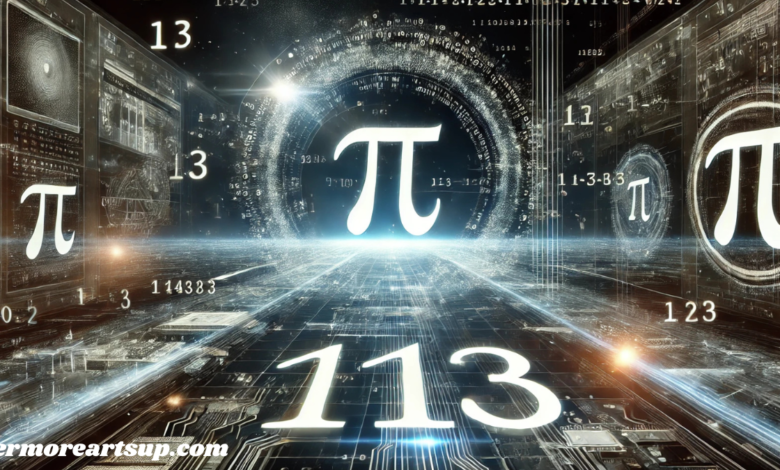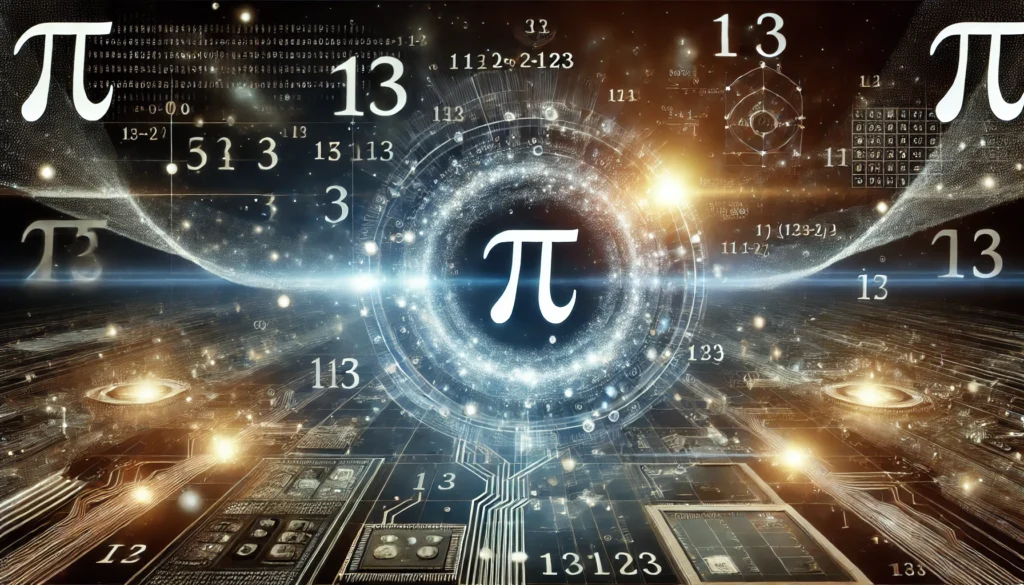Pi123 Understanding the Concept, Applications, and Importance

Introduction
Pi123 (π) is one of the most well-known mathematical constants widely used in geometry, engineering, and physics. However, Pi123 is an emerging concept that has sparked interest in mathematical and scientific communities. While traditional Pi represents the ratio of a circle’s circumference to its diameter, Pi123 explores a more complex numerical system, integrating advanced computational and theoretical mathematics.
Pi123 is not just a number—it embodies a deeper exploration of mathematical properties that extend beyond simple circles. It has implications in various fields, including cryptography, artificial intelligence, and computational science. Understanding Pi123 allows mathematicians and scientists to unlock new possibilities in data processing, algorithm efficiency, and high-level computations.
In this article, we will explore Pi123’s definition and history, mathematical significance, real-world applications, and potential future implications. By the end, you will understand why Pi123 is a critical concept worth exploring.
What is Pi123?
Pi123 is an advanced mathematical concept that extends beyond the traditional use of Pi. While Pi (π) is commonly known as 3.14159 and continues infinitely without repetition, Pi123 is believed to be a structured numerical sequence designed to improve computational accuracy in various fields. Researchers have theorized that Pi123 could represent an optimized version of Pi for specific calculations, providing greater precision and efficiency in mathematical modelling.
The origin of Pi123 remains a topic of discussion among mathematicians. Some believe it is derived from extending Pi’s infinite sequence into structured patterns, while others argue that it is an entirely new mathematical entity designed for high-speed computations. Unlike traditional Pi, which primarily serves geometry and trigonometry, Pi123 is positioned to enhance machine learning models, cryptographic systems, and data science applications.
How Pi123 Differs from Pi (π)
The primary difference between Pi123 and Pi (π) is its computational properties. Traditional Pi is irrational and non-repeating, making it challenging to use in precise calculations beyond certain decimal places. Pi123, however, may introduce a method of structuring the infinite nature of Pi into a more manageable form for computations.
While Pi is commonly used in physics, engineering, and geometry, Pi123 is designed to push the boundaries of computational mathematics. It can be applied in algorithms that require high precision, such as weather modelling, financial forecasting, and artificial intelligence.
Mathematical Properties of Pi123
Pi123 shares some similarities with Pi but introduces additional complexity. One possible mathematical property is its ability to align with rational approximations while maintaining the non-repeating nature of an irrational number. Mathematicians have suggested that Pi123 could follow a structured pattern that enhances numerical efficiency.
Pi123 could also be utilized in advanced number theory, particularly in prime number distribution and Fibonacci sequences. These mathematical elements are essential in cryptographic security, where large prime numbers significantly encrypt digital data.
Role of Pi123 in Computational Mathematics

Pi123 is expected to play a crucial role in computational mathematics, especially in areas where Pi’s irrational nature presents challenges. Computer algorithms often require precise calculations, but Pi’s infinite nature limits its usability in real-time computations. Pi123 could serve as a structured alternative, allowing for improved computational efficiency.
One of the primary uses of Pi123 in computation is numerical modelling. Fields such as physics, engineering, and artificial intelligence rely on models that require extreme precision. With Pi123, scientists and engineers can improve simulation accuracy, reducing computational errors caused by the limitations of traditional Pi.
Pi123 in Scientific Research
Scientific research relies heavily on precise mathematical constants for accuracy. Pi123, with its structured properties, could revolutionize simulations in quantum physics, astronomy, and biomedical engineering. Researchers studying the universe’s expansion or the behaviour of subatomic particles require highly accurate calculations, and Pi123 could offer a more refined approach than traditional Pi.
Applications in Technology and Engineering
Engineering applications often require precise measurements in civil engineering, aerospace design, or robotics. The traditional use of Pi helps engineers calculate curves, angles, and mechanical movements. However, Pi123 could introduce improved accuracy in computational simulations, allowing for more effective designs and optimizations.
For example, in aerospace engineering, minor errors in mathematical calculations can lead to significant navigation issues. Pi123 could provide enhanced precision, leading to better trajectory planning and fuel efficiency in space exploration missions. Similarly, in robotics, high-precision calculations are required for motion algorithms, making Pi123 a valuable asset in automation and AI development.
Pi123 in Cryptography and Cybersecurity
Cryptography heavily relies on mathematical principles, particularly prime numbers and irrational sequences, to create secure encryption protocols. Pi123’s structured numerical properties could introduce new encryption techniques, making it harder for cybercriminals to crack codes. By incorporating Pi123 into cryptographic algorithms, cybersecurity experts could enhance the strength of digital security systems, protecting sensitive data from cyber threats.
Limitations and Criticisms of Pi123
Despite its promising applications, Pi123 is still in the theoretical stage. One of the biggest challenges is proving its validity and effectiveness in real-world scenarios. Critics argue that traditional Pi (π) has been sufficient for centuries and that Pi123 may not provide enough advantages to justify widespread adoption.
Another concern is computational complexity. If Pi123 introduces a more structured approach, it must be tested extensively to ensure it does not compromise accuracy in exchange for efficiency. Researchers must determine whether Pi123 can outperform traditional Pi in high-precision calculations.
Future Possibilities and Emerging Trends
Pi123 could pave the way for a new era in mathematical applications, particularly in quantum computing and artificial intelligence. As machine learning and AI continue to evolve, mathematical constants like Pi123 could optimize data processing, reducing computational costs and improving accuracy.
Additionally, Pi123 may play a role in the future of blockchain technology. Cryptographic techniques that rely on mathematical structures could benefit from Pi123’s unique properties, making digital transactions more secure and efficient.
The next step for Pi123 research involves testing its applications in real-world computational scenarios. If Pi123 proves beneficial, it could become a widely accepted mathematical tool, reshaping how scientists and engineers approach complex calculations.
Conclusion
Pi123 is an intriguing mathematical concept with potential implications in various fields, including engineering, AI, cryptography, and computational sciences. While it differs from traditional Pi (π), its structured numerical properties could introduce new efficiencies in complex calculations.
Despite scepticism, ongoing research suggests that Pi123 could revolutionize precision-based technologies, making computations faster and more reliable. Whether in space exploration, cybersecurity, or artificial intelligence, Pi123 has the potential to shape the future of mathematical applications.
As mathematicians continue to explore Pi123, it is only a matter of time before we see its real-world impact. Keeping an open mind about new mathematical innovations will help us push the boundaries of human knowledge and technological advancements.
FAQs
What is the significance of Pi123 in modern mathematics?
Pi123 introduces a structured numerical sequence that could improve computational efficiency.
How does Pi123 differ from traditional Pi (π)?
Pi123 is structured to enhance calculation precision, unlike Pi, which is infinitely non-repeating.
Can Pi123 be used in real-world applications?
Pi123 has potential cryptography, AI, engineering, and scientific modelling applications.
Is Pi123 an established mathematical constant?
Pi123 is still under research and has not yet been universally adopted in mathematical computations.
What industries could benefit from Pi123?
Fields such as aerospace, cybersecurity, quantum computing, and financial modelling could see advancements through Pi123.
You May Also Read: https://livermoreartsup.com/be1crypto/




